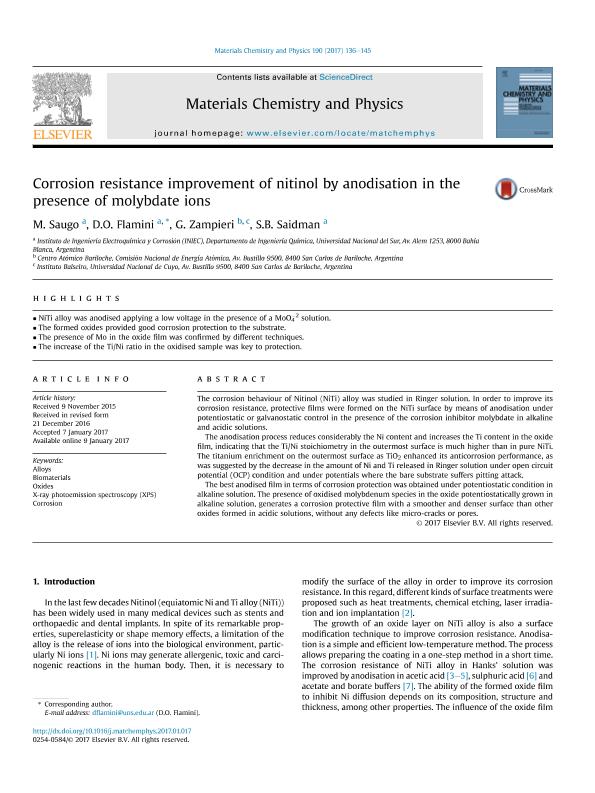Artículo
Corrosion resistance improvement of nitinol by anodisation in the presence of molybdate ions
Fecha de publicación:
01/04/2017
Editorial:
Elsevier Science Sa
Revista:
Materials Chemistry and Physics
ISSN:
0254-0584
Idioma:
Inglés
Tipo de recurso:
Artículo publicado
Clasificación temática:
Resumen
The corrosion behaviour of Nitinol (NiTi) alloy was studied in Ringer solution. In order to improve its corrosion resistance, protective films were formed on the NiTi surface by means of anodisation under potentiostatic or galvanostatic control in the presence of the corrosion inhibitor molybdate in alkaline and acidic solutions. The anodisation process reduces considerably the Ni content and increases the Ti content in the oxide film, indicating that the Ti/Ni stoichiometry in the outermost surface is much higher than in pure NiTi. The titanium enrichment on the outermost surface as TiO2 enhanced its anticorrosion performance, as was suggested by the decrease in the amount of Ni and Ti released in Ringer solution under open circuit potential (OCP) condition and under potentials where the bare substrate suffers pitting attack. The best anodised film in terms of corrosion protection was obtained under potentiostatic condition in alkaline solution. The presence of oxidised molybdenum species in the oxide potentiostatically grown in alkaline solution, generates a corrosion protective film with a smoother and denser surface than other oxides formed in acidic solutions, without any defects like micro-cracks or pores.
Palabras clave:
Alloys
,
Biomaterials
,
Corrosion
,
Oxides
,
X-Ray Photoemission Spectroscopy (Xps)
Archivos asociados
Licencia
Identificadores
Colecciones
Articulos(CCT - BAHIA BLANCA)
Articulos de CTRO.CIENTIFICO TECNOL.CONICET - BAHIA BLANCA
Articulos de CTRO.CIENTIFICO TECNOL.CONICET - BAHIA BLANCA
Articulos(CCT - PATAGONIA NORTE)
Articulos de CTRO.CIENTIFICO TECNOL.CONICET - PATAGONIA NORTE
Articulos de CTRO.CIENTIFICO TECNOL.CONICET - PATAGONIA NORTE
Citación
Saugo, Melisa; Flamini, Daniel Omar; Zampieri, Guillermo Enrique; Saidman, Silvana Beatriz; Corrosion resistance improvement of nitinol by anodisation in the presence of molybdate ions; Elsevier Science Sa; Materials Chemistry and Physics; 190; 1-4-2017; 136-145
Compartir
Altmétricas




